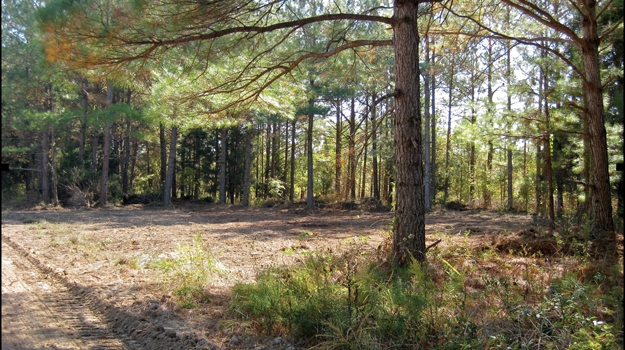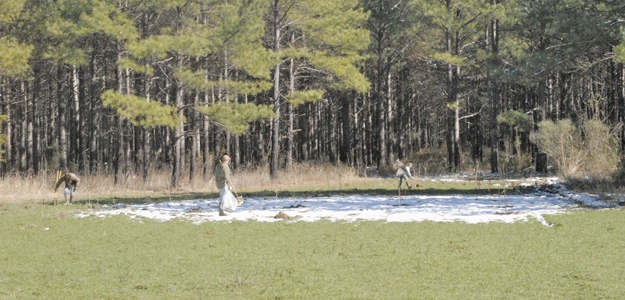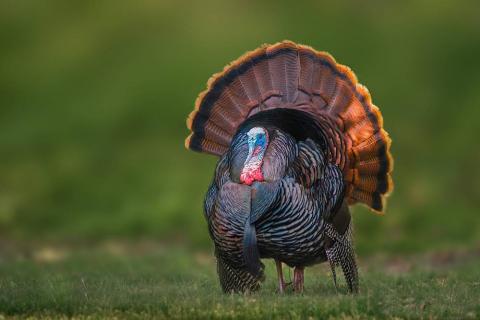
Here and There, but not everywhere, so Beware
By Dudley Phelps and Blake Hamilton
By now we’ve all realized that most of our favorite wildlife species prefer to enter, exit, and congregate in little tucked away nooks and crannies of food plots and openings. The most logical reason for this is safety from predators. A mature buck for example, can enter a secluded “pocket” unseen- for a quick late afternoon bite or scent-check the area knowing if something fishy happens he can quickly jet to secure edge-cover in either direction. If danger never shows, he can proceed to venture out further to grab a few untouched morsels, harass a doe, or check a scrape on the other side of the field. Safety and security aren’t the only reasons wildlife prefer edge pockets.
A corner pocket of a field may have more soil moisture due to edge trees shading the soil, and therefore may have more palatable or different types of food available. Perennial clovers often tolerate summer heat in these semi-shaded pockets while the middle of the field goes dormant, or a fall food plot may have enough residual moisture in a pocket to germinate and establish compared to the middle of the field, thus providing an early draw. Because of these reasons and more, we as wildlife managers prefer most fields to have an irregular shape.
Provided there is an excess of open ground on a property, or one is willing to add some irregularity to their openings via logging operations, dozer work, or elbow grease, we’d like to discuss some work we do on our client’s and personal properties that make “plot pockets” an even greater draw for wildlife. Due to the current, popular agricultural and forest management practices, we believe that edge habitat or transitional cover and the subsequent soft mast component is often lacking. That being said, many of us are willing to sacrifice a percentage of timber space, agriculture base, or excessive habitat in the name of improving what is lacking for wildlife.
Our client, Dr. Walt Starr agrees, so we spent some time this past fall and winter enhancing his Oktibbeha County, Mississippi, tree farm and recreational property. The portions of Walt’s property he wanted to improve were in and around a maze of roads, fire-lanes, and openings scattered throughout an area of mid-rotation loblolly pine plantation. Walt has already established an intensive, long-term forest and wildlife management plan for this particular property, but he doesn’t let the phrase long term get in the way of making adjustments. Our client base ranges from admitted cluelessness to incredibly knowledgeable when it comes to understanding the dynamics of their properties, and Walt fits into the latter. Along with his knowledge, he understands the importance of getting second, or even third opinions before cranking the proverbial dozer.
So after a few visits, we all agreed there were some unproductive areas composed of undesirable young hardwoods in, and adjacent to, his pine stands. Thick areas such as this may be the missing link on another property, but lack of cover isn’t a problem at Walt’s place. Most of these areas were former logging decks, or tiny fallowed spots along his system of “plotted” lanes, roads and wildlife openings. We quickly got to work, and after the mechanical work was finished, his already wide roads and fire lanes were now even wider and crowned or graded. Linear strip plots were transformed into L-shaped plots, and numerous pockets and points were added to the edges of larger existing plots.
After soil tests, the existing and new openings were treated accordingly and planted in various BioLogic blends. Aside from the obvious wildlife benefits, the BioLogic will help control erosion, provide a living mulch, and improve the soil prior to and during the next phase of this project, which is the planting and establishment of various soft mast trees from Nativ Nurseries.

After deer season was over, we grabbed our shovels and headed to the newly created openings to begin planting several hundred, three gallon sized and smaller, soft mast producing trees in a strategic fashion. The strategy was based on factors such as species height at maturity, species/site requirements and pollination, fruit drop time, spacing, nearby bedding cover, differing wind directions, and access. We also left a wide buffer surrounding the tree plantings to allow room for a fire break and a perimeter strip of native warm season grasses adjoining the pines.
All of these factors are important components for the success of the plantings, benefits to wildlife, and hunter success which are all parts of fulfilling the landowner’s goals. The species list included naturally occurring, soft mast timber type species such as blackgum, red mulberry, and persimmon, and an array of shorter statured wild and domesticated pears, apples and crabapples, plums, and pears. All of these trees will be either caged or tubed to accelerate growth and deter deer damage, and being part of a food plot for the first few years they will also receive the added benefit of timely fertilization treatments. Walt’s newly created wildlife pockets have already increased hunter success, so the not-so-long wait for the trees to bear fruit really isn’t a wait at all.
Existing or man-made irregularities along food plots or openings are already naturally preferred by wildlife. If your property is lacking in a particular habitat feature such as hard or soft mast, these “pockets” can be quite the draw for wildlife when paired with traditional food plot forage plantings, not to mention they also add an aesthetic touch to the landscape. Put the “eight ball” of forage AND mast in the “corner pocket” of your fields and provide an instant, game-winning combo you’ll never regret.



























